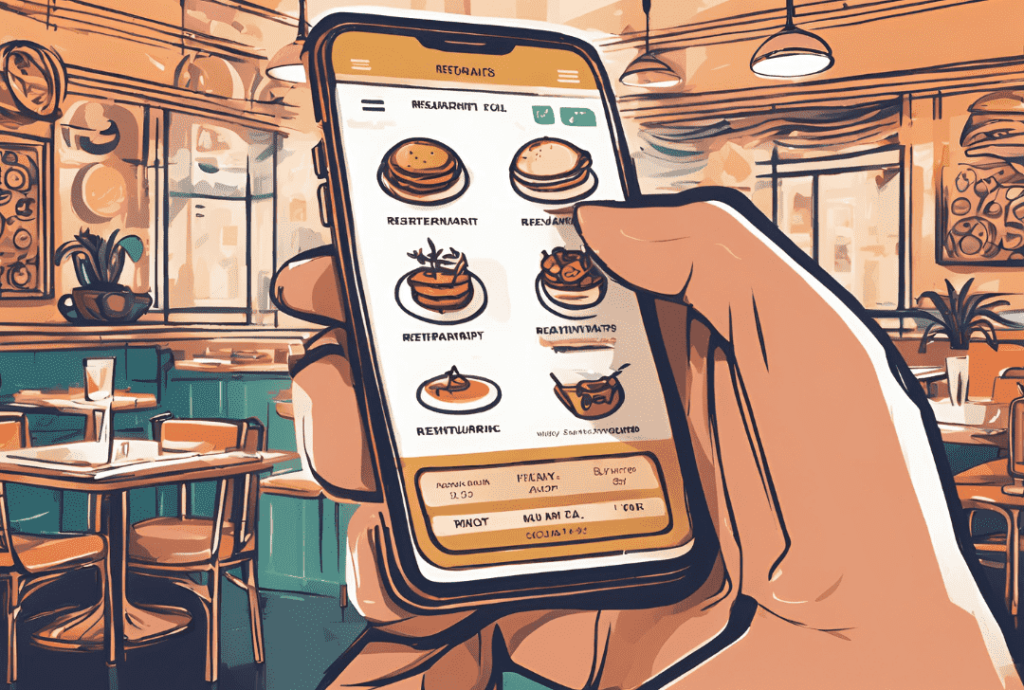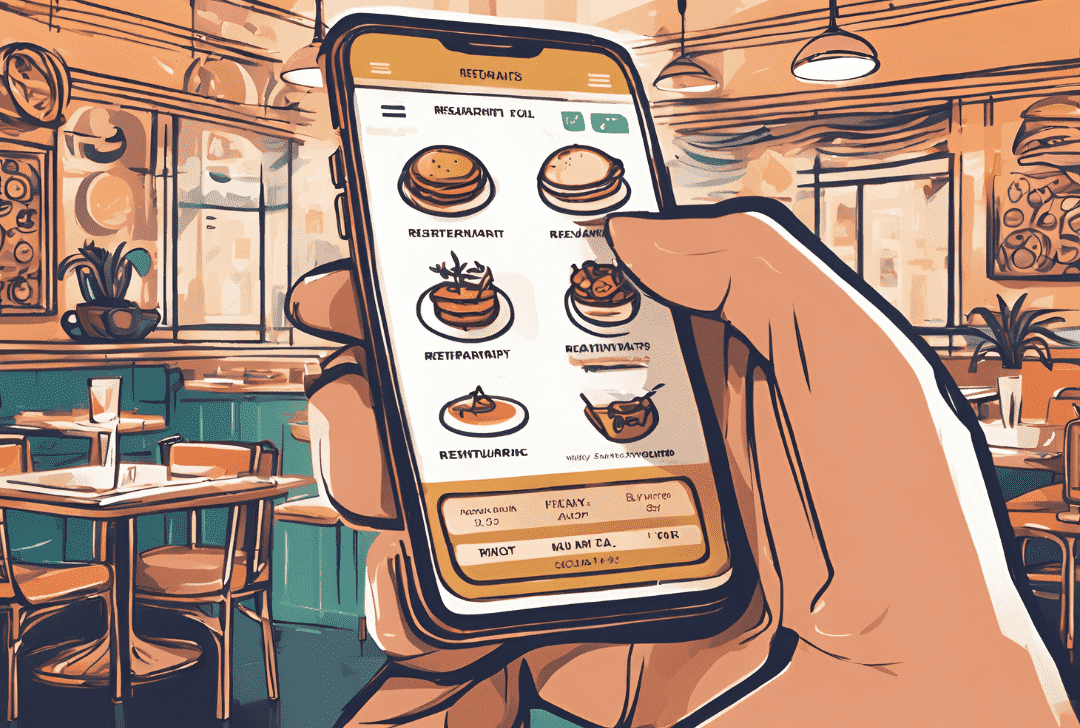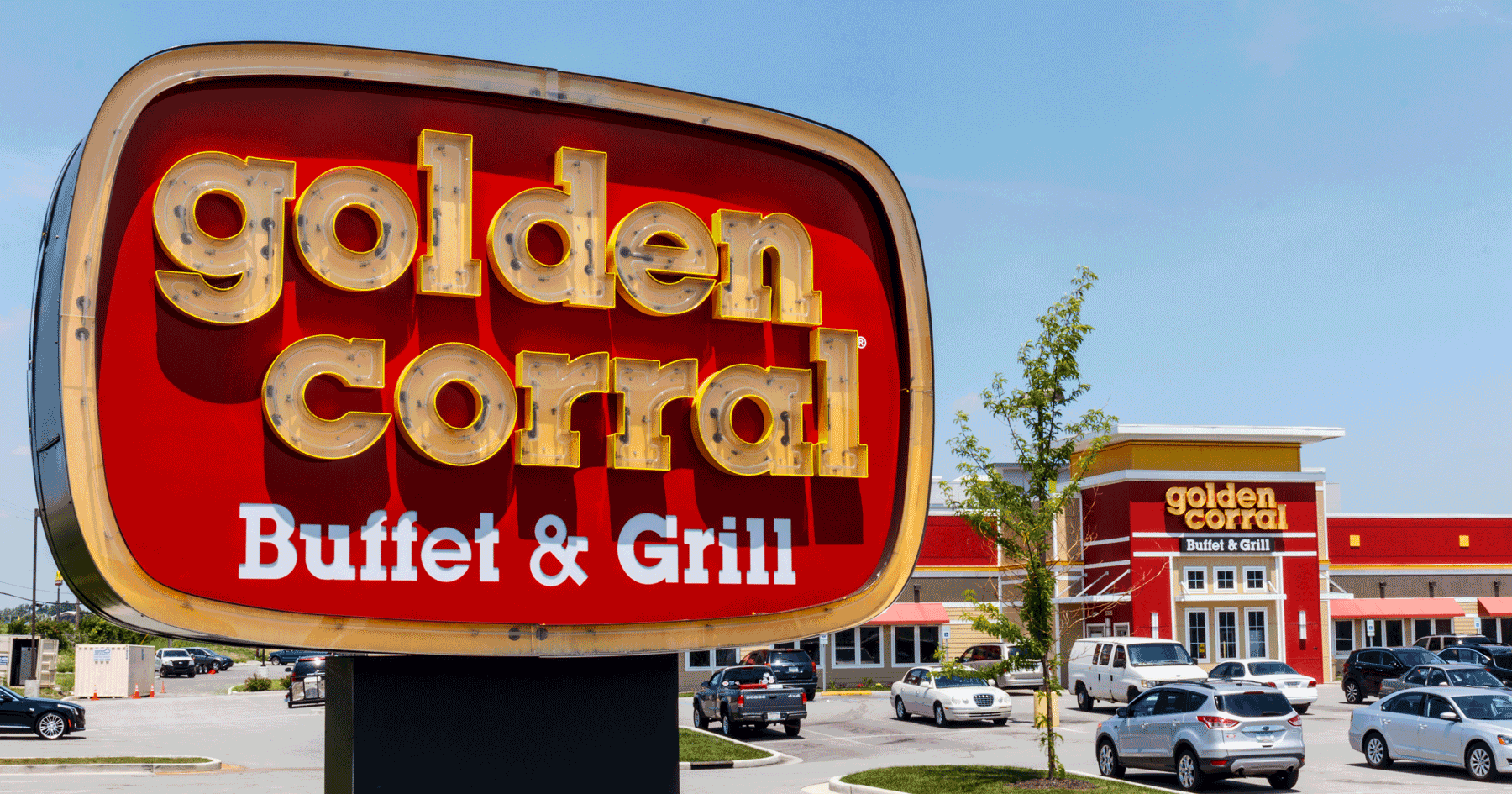In today’s competitive restaurant industry, keeping customers coming back is crucial for success. The best restaurant loyalty programs have become a game-changer, offering a win-win situation for both diners and establishments. These programs not only encourage repeat visits but also foster a sense of connection between patrons and their favorite eateries. From exclusive discounts to personalized experiences, loyalty initiatives have transformed the dining landscape, making it more rewarding than ever to be a regular customer.
As restaurants strive to stand out, many are turning to innovative loyalty strategies to boost customer retention and satisfaction. This article delves into the world of restaurant loyalty programs, exploring their key features and highlighting top examples for 2024. Readers will gain insights into implementing effective loyalty initiatives, best practices for success, and methods to measure their impact. Whether you’re a restaurant owner looking to start a program or a food enthusiast curious about the perks, this guide covers everything you need to know about the most enticing loyalty offerings in the culinary world, including special birthday rewards that make diners feel truly valued.

Content
What Are Restaurant Loyalty Programs?
Definition
Restaurant loyalty programs are strategic initiatives designed to reward customers for their repeat visits and encourage them to spend more. These programs offer incentives such as points, discounts, or special perks to patrons who frequently dine at a particular establishment. The primary goal is to foster customer engagement, boost repeat business, and ultimately increase the restaurant’s profits.
These programs typically operate through digital platforms, such as mobile apps or online accounts, where customers can track their rewards and redeem them for various benefits. Some common features include earning points for each purchase, receiving free menu items after a certain number of visits, or gaining access to exclusive promotions and events.
Benefits for Restaurants
Implementing a loyalty program has a significant impact on a restaurant’s success. Here are some key advantages:
- Increased Customer Retention: Statistics show that a mere 5% increase in customer retention can lead to a 25% to 95% boost in profits. Loyalty programs provide a compelling reason for diners to choose a particular restaurant over competitors.
- Valuable Customer Insights: These programs serve as data hubs, allowing restaurants to gather crucial information about customer preferences, ordering habits, and spending patterns. This data enables businesses to create targeted marketing campaigns and personalized offerings.
- Enhanced Brand Awareness: Loyalty programs provide a strong branding opportunity. Whether through digital platforms or physical loyalty cards, they help spread awareness of the restaurant’s brand and differentiate it from competitors.
- Increased Average Order Value: Customers enrolled in loyalty programs are more likely to spend more per visit to maximize their point earnings. This behavior has a positive impact on the restaurant’s revenue.
- Cost-Effective Marketing: Retaining existing customers through loyalty programs is generally more cost-effective than acquiring new ones. It allows restaurants to focus their marketing efforts on a receptive audience.
Benefits for Customers
Loyalty programs offer several advantages to diners, making them increasingly popular among consumers:
- Rewards and Discounts: The most obvious benefit is the ability to earn rewards, such as free meals, discounts, or special offers. This gives customers more value for their money and encourages them to dine out more frequently.
- Personalized Experiences: As restaurants gather data through loyalty programs, they can offer more tailored experiences and promotions based on individual preferences and dining habits.
- Exclusive Access: Many loyalty programs provide members with early or exclusive access to new menu items, special events, or limited-time offers. This creates a sense of exclusivity and appreciation among loyal customers.
- Convenience: Digital loyalty programs often integrate with mobile ordering and payment systems, streamlining the dining experience for customers.
- Birthday Rewards: Many restaurant loyalty programs offer special birthday rewards, making customers feel valued and appreciated on their special day.
- Gamification: Some programs incorporate elements of gamification, such as challenges or tiered rewards systems, which can make the dining experience more engaging and fun for customers.
By offering these benefits, restaurant loyalty programs create a win-win situation for both the establishment and its patrons. They encourage repeat visits, foster a sense of connection between customers and their favorite eateries, and ultimately contribute to the long-term success of the restaurant.
Key Features of Successful Loyalty Programs
Successful restaurant loyalty programs share several key features that contribute to their effectiveness in attracting and retaining customers. These features work together to create a seamless, engaging, and rewarding experience for diners.
Easy Sign-Up Process
A crucial aspect of any successful loyalty program is its accessibility. Restaurants should focus on making the sign-up process as simple and straightforward as possible. This approach encourages more customers to join, increasing the program’s reach and impact.
To achieve this, restaurants can:
• Offer multiple sign-up options, such as in-person at the restaurant, through a mobile app, or via the restaurant’s website. • Minimize the amount of information required for enrollment, typically asking for just a name and contact details. • Integrate the sign-up process with the point-of-sale system, allowing customers to join easily during checkout. • Train staff to assist customers with enrollment, ensuring a smooth experience for those who may need help.
By removing barriers to entry, restaurants can significantly boost participation rates in their loyalty programs.
Attractive Rewards
The heart of any successful loyalty program lies in its rewards. To keep customers engaged and encourage repeat visits, restaurants must offer incentives that truly resonate with their target audience.
Effective reward strategies include:
• Points-based systems where customers earn points for each purchase, which can be redeemed for discounts or free items. • Tiered membership levels that unlock additional benefits as customers progress, creating a sense of achievement and exclusivity. • A mix of instant rewards and long-term goals to maintain interest and motivation. • Special birthday rewards that make customers feel valued on their special day.
When designing rewards, restaurants should consider the perceived value to the customer versus the actual cost to the business. For example, offering free sides or desserts as rewards can be highly appealing to customers while having a relatively low cost for the restaurant.
Personalization
In today’s competitive market, personalization has become a key differentiator for successful loyalty programs. By leveraging customer data and preferences, restaurants can create tailored experiences that foster a deeper connection with their patrons.
Effective personalization strategies include:
• Analyzing purchase history to offer rewards based on individual preferences and dining habits. • Sending personalized promotions and offers that align with a customer’s favorite menu items or dining frequency. • Creating customized challenges or goals that encourage customers to try new items or visit during off-peak hours. • Offering exclusive access to special events or menu items based on a customer’s loyalty tier or preferences.
By implementing these key features, restaurants can create loyalty programs that not only attract new customers but also encourage existing ones to visit more frequently and spend more. The combination of easy accessibility, attractive rewards, and personalized experiences forms the foundation of the best restaurant loyalty programs, helping establishments build lasting relationships with their customers and drive long-term success.
Top Restaurant Loyalty Program Examples
Starbucks Rewards
Starbucks Rewards stands out as one of the most successful restaurant loyalty programs, boasting over 30 million active members. The program’s popularity stems from its user-friendly app and simple points-based system. Members earn “stars” with every purchase, which can be redeemed for a variety of rewards.
The program offers two tiers: Green and Gold. Green is the entry-level tier, while Gold status is achieved after earning 450 stars. Gold members enjoy additional perks, including a free birthday reward every year. The app allows members to track their star balance, place orders in advance, and even send gift cards to friends.
Starbucks Rewards has significantly contributed to the company’s success, with nearly 60% of its total revenue coming from program members. The program’s effectiveness was evident in 2019 when Starbucks reported a 7% increase in sales primarily due to its rewards program.
One of the program’s strengths lies in its data collection and utilization. With millions of transactions weekly, Starbucks can tailor offers, create new products, and monitor app usage to enhance the customer experience. This data-driven approach allows for personalized communication and targeted promotions, fostering stronger relationships with members.
Chick-fil-A One
Chick-fil-A One has gained popularity with over 50 million members since its launch. This tiered membership program offers increasing benefits as customers earn more points. The program is divided into four tiers: Member, Silver, Red, and Signature status.
Members earn points on qualifying purchases, with higher tiers earning more points per dollar spent. For example, base members earn 10 points per dollar, while Signature members earn 13 points. These points can be redeemed for a variety of rewards, including free food items.
One of the program’s unique features is its birthday reward, which is available to members at all tiers. The program also allows members to save their favorite menu items and restaurant locations for quick and easy ordering.
Chick-fil-A One emphasizes personalization and engagement. Members receive exclusive access to new menu items and limited-time offerings. The program also incorporates elements of gamification, such as challenges and special promotions, to keep members engaged and encourage frequent visits.
Domino’s Piece of the Pie Rewards
Domino’s Piece of the Pie Rewards program has recently undergone significant improvements to enhance customer engagement. The program now allows members to earn points on a wider range of purchases, making it easier for customers to accumulate rewards.
Under the updated system, customers earn 10 points for every order of USD 5.00 or more, a reduction from the previous USD 10.00 minimum. This change makes the program more accessible to customers who place smaller orders.
The program has also expanded its reward options. Previously, members could only redeem 60 points for a free pizza. Now, they can choose from a variety of rewards at different point levels:
• 20 points: Free dipping cup, 16-piece Parmesan Bread Bites, or a 20 oz. drink • 40 points: Order of Bread Twists or Stuffed Cheesy Bread • 60 points: Medium two-topping pizza, pasta, Oven-Baked Sandwich, or 3-piece Chocolate Lava Crunch Cakes
This tiered reward system provides more flexibility and encourages frequent purchases. The program also offers additional opportunities to earn points through special promotions and challenges.
Domino’s has integrated its loyalty program with its digital ordering platforms, allowing members to easily track their points and redeem rewards. However, it’s worth noting that orders placed through third-party delivery services like Uber Eats are not eligible for earning or redeeming points.
These examples demonstrate how the best restaurant loyalty programs leverage technology, personalization, and flexible reward structures to enhance customer engagement and drive repeat business. By offering birthday rewards and other exclusive perks, these programs create a sense of value and appreciation that keeps customers coming back for more.
Implementing a Loyalty Program: Best Practices
Implementing a successful restaurant loyalty program requires careful planning and execution. By following these best practices, restaurants can create a program that engages customers, drives repeat business, and ultimately boosts revenue.
Choose the Right Technology
Selecting the appropriate technology is crucial for the success of a loyalty program. Restaurants should invest in a platform that is easy to use, flexible, and affordable. The chosen system should integrate seamlessly with existing point-of-sale (POS) systems and offer features such as:
• Mobile app integration for easy access and reward tracking • Customer data analytics for personalized marketing • Flexible reward structures to accommodate different customer segments
When evaluating loyalty program software, consider options that allow for both online and in-person transactions. This ensures that customers can earn and redeem rewards regardless of how they choose to interact with the restaurant.
Train Staff Effectively
Staff training is a critical component of implementing a successful loyalty program. Employees are the front-line ambassadors of the program and play a vital role in promoting it to customers. To ensure effective staff training:
• Conduct comprehensive onboarding sessions for new employees • Organize regular training sessions to keep staff updated on program changes • Use scenario-based training to prepare staff for real-world situations • Encourage staff to experience the loyalty program firsthand
Consider implementing incentives for staff members who successfully sign up new loyalty program members. This can include competitions, bonuses, or recognition programs to motivate employees to actively promote the program.
Promote the Program
A well-designed loyalty program is only effective if customers know about it and understand its benefits. Restaurants should develop a comprehensive marketing strategy to promote their loyalty program:
• Use in-store displays and signage to advertise the program near POS systems • Incorporate program information into menus, highlighting potential rewards • Leverage social media platforms to showcase program benefits and member experiences • Run targeted ads to attract new members and re-engage existing ones • Include program details in email newsletters and on the restaurant’s website
To make the program more appealing, consider offering a signing bonus or birthday rewards to new members. This can encourage immediate participation and create a positive first impression of the program.
When promoting the loyalty program, focus on communicating its simplicity and value. Customers should easily understand how to earn and redeem rewards, as well as the potential benefits of participating in the program.
By implementing these best practices, restaurants can create loyalty programs that not only attract new customers but also encourage existing ones to visit more frequently and spend more. The combination of the right technology, well-trained staff, and effective promotion forms the foundation of the best restaurant loyalty programs, helping establishments build lasting relationships with their customers and drive long-term success.
Measuring Loyalty Program Success
Key Metrics to Track
To evaluate the effectiveness of restaurant loyalty programs, it’s crucial to monitor several key metrics. These metrics provide valuable insights into customer behavior, program performance, and overall business impact.
One essential metric is the enrollment rate, which measures the percentage of customers who sign up for the loyalty program compared to the total customer base. A high enrollment rate indicates strong customer interest and engagement. To calculate the enrollment rate, use the following formula:
Enrollment Rate = (New Sign-ups / Total Customers) * 100
Another important metric is the engagement rate, which assesses how frequently customers participate in program activities, such as making purchases or redeeming rewards. A higher engagement rate suggests that customers find value in the program and are actively taking advantage of its benefits. The formula for calculating the engagement rate is:
Program Engagement Rate = (Engaged Customers / Total Members) * 100
The redemption rate is another crucial metric that measures the percentage of earned rewards that customers redeem. A high redemption rate indicates that customers find value in the rewards offered, leading to increased engagement and satisfaction. To calculate the redemption rate, use the following formula:
Redemption Rate = (Redeemed Rewards / Earned Rewards) * 100
Customer Lifetime Value (CLV) is a vital metric that predicts the total value a customer will bring to the business throughout their entire relationship with the loyalty program. By calculating CLV, restaurants can assess the long-term profitability of their customers and allocate resources accordingly. The formula for CLV is:
CLV = Average Purchase Value * Purchase Frequency * Average Customer Lifespan
Tracking the Net Promoter Score (NPS) is also essential for measuring customer satisfaction and loyalty. NPS gages the likelihood of customers recommending the loyalty program to others. To calculate NPS, use the following formula:
NPS = Percentage of Promoters – Percentage of Detractors
Analyzing Customer Data
To gain a comprehensive understanding of loyalty program performance, restaurants must analyze customer data effectively. This analysis provides valuable insights into customer behavior, preferences, and trends, enabling businesses to make data-driven decisions and optimize their loyalty programs.
One crucial aspect of customer data analysis is segmentation. By dividing customers into distinct groups based on factors such as demographics, purchase history, and engagement levels, restaurants can tailor their loyalty program offerings and marketing strategies to specific customer segments. This personalized approach can lead to increased engagement and higher customer satisfaction.
Another important consideration is the analysis of purchase patterns. By examining data on purchase frequency, average order value, and product preferences, restaurants can identify trends and opportunities for upselling or cross-selling. This information can be used to create targeted promotions and personalized rewards that resonate with customers and drive repeat business.
Restaurants should also pay attention to customer feedback and reviews. Analyzing sentiment analysis and review ratings can help identify areas for improvement and address any issues or concerns raised by customers. This feedback loop is crucial for continuously refining and enhancing the loyalty program to better meet customer needs and expectations.
Furthermore, tracking customer behavior across different channels, such as in-store purchases, online orders, and mobile app usage, provides a holistic view of the customer journey. This omnichannel approach allows restaurants to create seamless experiences and tailor loyalty program features to different touchpoints.
By leveraging customer data effectively, restaurants can create more engaging and personalized loyalty programs that drive customer retention and increase revenue. The insights gained from data analysis enable businesses to make informed decisions about program features, rewards structures, and marketing strategies, ultimately leading to more successful and impactful loyalty initiatives.
Conclusion
Restaurant loyalty programs have become game-changers in the food industry, offering a win-win situation for both diners and establishments. These programs have a significant influence on customer retention, data collection, and overall revenue growth. By implementing well-designed loyalty initiatives with features like easy sign-ups, attractive rewards, and personalization, restaurants can foster stronger connections with their patrons and encourage repeat visits.
To create successful loyalty programs, restaurants need to choose the right technology, train their staff effectively, and promote the program actively. Measuring success through key metrics and analyzing customer data allows for continuous improvement and optimization. In the end, the best restaurant loyalty programs not only boost customer satisfaction and loyalty but also contribute to the long-term success of the business, making them an essential tool in today’s competitive culinary landscape.
FAQs
What are the most effective loyalty programs currently available?
This question is not answered in the provided material.
What will loyalty programs look like in the future?
Loyalty programs are expected to evolve significantly, with a strong emphasis on hyper-personalization. This approach will cater specifically to individual consumer preferences and needs, shaping the future of consumer engagement in 2024.
Which company offers the best loyalty program globally?
This question is not answered in the provided material.
How beneficial are loyalty programs for restaurants?
Loyalty programs are highly beneficial for restaurants as they effectively boost repeat business and enhance customer retention. According to a study by Harvard Business School, a mere 5% increase in customer retention can lead to a profit increase of anywhere between 25% and 95%.

Kylie Davidson is a health blogger and the founder of her own blog about fitness. She has been blogging for three years now and loves to share what she learns with others. Kylie enjoys reading, cooking, and staying active outdoors.


